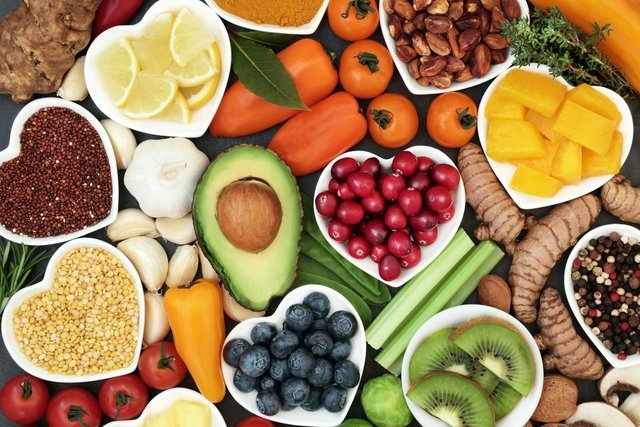Some foods such as orange, cayenne pepper, ginger and garlic have antioxidant and anti-inflammatory properties that improve blood circulation, helping to alleviate symptoms of poor circulation, such as swelling, pain and tiredness in the legs, for example.
It is important to include these foods in your daily diet, and it is also recommended to avoid those that promote poor blood circulation, such as foods rich in fat, salt and sugar.
Furthermore, it is also important to drink plenty of water throughout the day, as this drink promotes blood circulation, preventing fluid retention and combating poor circulation. Check out other natural tips for poor circulation.

Main foods
Some examples of foods that help improve blood circulation are:
1. Green tea
Green tea is rich in catechins, phenolic compounds that reduce inflammation, relax blood vessels and prevent the formation of fatty plaques in the arteries, improving circulation and helping to avoid situations such as high blood pressure, atherosclerosis and heart attack.
Green tea can be prepared with dehydrated leaves, in powder form or in a bag, and it is recommended to drink between 2 and 3 cups a day. Learn more about how to make and consume green tea.
2. Cayenne pepper
Cayenne pepper improves circulation as it is rich in capsaicin, a bioactive compound that stimulates the release of nitric oxide, which is a compound responsible for facilitating blood circulation in veins and arteries. Discover all the benefits of cayenne pepper.
You can put 1 teaspoon of cayenne pepper powder in a bottle of olive oil and use it to season a salad, for example. Additionally, cayenne pepper can also be used to season preparations such as soups, meats, sauces and stews.
3. Dark chocolate
Dark chocolate has great amounts of cocoa, a food with anti-inflammatory and antioxidant action that reduces the oxidation of fat cells, avoiding the risk of clot formation and improving circulation.
To obtain the benefits of this food, it is recommended to eat between 20 and 30 g of dark chocolate, with a minimum of 70% cocoa, per day. Dark chocolate can be consumed alone or together with fruits, nuts, for example.
4. Nuts
Walnuts improve blood circulation as they are rich in omega 3 and ellagic acid, bioactive compounds with anti-inflammatory and antioxidant properties, which improve artery health and help inhibit the accumulation of fat in the veins.
To take advantage of the benefits of nuts, you can consume one portion per day (28 g), which is equivalent to around 5 to 6 g of this oilseed. Nuts can be eaten alone or added to yogurt, fruit, sauces, bread or granola.
5. Beetroot
Beetroot is rich in nitrates, components that are transformed into nitric oxide in the body, promoting the relaxation of blood vessels and improving blood circulation. Check out all the benefits of beetroot.
Beetroot can be consumed raw or cooked, in salads, juices, pâtés, soups, cakes and breads, for example.
6. Orange
Orange is rich in vitamin C, a nutrient that has powerful antioxidant and anti-inflammatory action, helping to maintain blood circulation, as it strengthens and relaxes blood vessels.
Furthermore, the vitamin C in oranges also acts in the formation of collagen, which is the protein that is part of the structure of the arteries, promoting greater elasticity in the blood vessels, which facilitates the transport of blood from the heart throughout the body.
Orange can be consumed raw or added to recipes such as fruit salad, smoothies, sauces, cakes, pancakes and jellies. See more about how to consume orange.
7. Garlic
Garlic is rich in allicin, an organic compound that helps reduce levels of “bad” cholesterol, LDL, and triglycerides in the blood, maintaining artery health and improving blood circulation.
To obtain the benefits of this food, you can consume 1 clove of fresh garlic per day, which can be used to season meats, salads, sauces and pasta, for example. To increase its benefits, it is recommended to chop or crush the garlic and let it rest for 10 minutes before using, as this increases the amount of allicin.
8. Acai
Açaí is a great food for improving blood circulation, because it stimulates the production of nitric oxide, a powerful vasodilator that facilitates circulation and the supply of oxygen and nutrients throughout the body.
Açaí can be consumed along with yogurt, granola, oats, almonds and fruits. Furthermore, açaí can also be used in sweet and savory preparations, such as popsicles, bread, pies and tapioca.
9. Turmeric
Consuming turmeric promotes the resistance of blood vessels, improving circulation, as it contains curcumin, which is a powerful antioxidant that prevents damage caused by free radicals to healthy cells.
Turmeric can be used fresh or in powder form, to season preparations such as soups, meats and vegetables or to prepare teas. See how to use turmeric.
10. Uva
Grapes, especially purple grapes, can improve blood circulation, preventing the emergence of cardiovascular diseases, as they are rich in resveratrol, tannins and anthocyanins, which are bioactive compounds that prevent the formation of plaque in the arteries.
Grapes can be consumed with their skins, raw or used in preparations, such as juices, salads, popsicles, gelatins and mousses. Although there is no specific amount recommended for grape consumption, the minimum fruit recommendation is 2 to 3 servings a day, which corresponds to around 200 g.
11. Sardines
Sardines are rich in omega 3, a healthy fat that improves blood circulation, as it stimulates the production of nitric oxide, in addition to having anti-inflammatory, antioxidant and antithrombotic effects, making the blood more fluid and facilitating circulation.
To obtain the benefits of this fish, it is recommended to eat a portion of 85 g of sardines, twice a week, which can be consumed roasted, stewed or grilled.
12. Tomato
Tomato improves blood circulation as it is rich in potassium, a mineral that promotes the relaxation of arteries, facilitating blood circulation and helping to prevent situations such as fluid retention and high blood pressure. Discover all the benefits of tomatoes.
Tomatoes can be consumed raw, cooked or dehydrated, alone or used in preparations such as juices, salads, sauces, soups or jellies.
13. Ginger
Ginger improves blood circulation, as it contains gingerol, chogaol and zingerone, phenolic compounds that have anti-inflammatory and vasodilatory properties, helping to improve blood flow in veins and arteries.
Furthermore, ginger also inhibits the formation of fatty plaques in blood vessels, preventing diseases such as heart attack, atherosclerosis and stroke.
Ginger can be used fresh, dehydrated or in powder form, to prepare teas or in recipes, such as soups, juices, yogurts or salads. Check out how to use ginger.
14. Onion
Onion contains alliin and quercetin, compounds with antioxidant and anti-inflammatory action that promote the relaxation of blood vessels, improving blood circulation.
Furthermore, onions also reduce platelet aggregation, avoiding the risk of clot formation that could favor the development of a stroke, for example.
Onions can be consumed raw, cooked, or roasted, alone or in recipes such as salads, sauces, creams or preserves.
Menu option to improve circulation
The following table provides an example of a 3-day menu to improve circulation:
The quantities and types of food included in the menu vary depending on each person’s age, gender, physical activity and health status. Therefore, it is advisable to consult a nutritionist so that a complete assessment can be carried out and an individualized meal plan created.
What to avoid
Foods that should be avoided to improve blood circulation are:
- Foods high in sodiumsuch as processed, canned and sausage foods, as they can increase blood pressure and cause fluid retention, which can hinder blood circulation and increase the risk of hypertension and cardiovascular diseases;
- Processed and ultra-processed foodssuch as pizzas, lasagnas, hamburgers, among others, as they are high in saturated fats, trans fats, refined sugars and sodium, which can contribute to inflammation of the arteries, hindering blood circulation;
- Refined sugarssuch as sweets, sugary drinks, soft drinks, cakes and desserts, as they can cause spikes in blood sugar, inflammation and damage to blood vessels, which can interfere with blood circulation in the long term;
- Foods high in fat and fried foodssuch as sausages, ham, chorizo, whole milk, butter, margarine, yellow cheeses and sauces, as excess fat accumulates in the arteries and hinders blood circulation.
Furthermore, excessive alcohol consumption can increase blood pressure, contribute to the formation of blood clots and cause damage to the lining of vessels, which can impede blood circulation and increase the risk of cardiovascular disease.

Sign up for our newsletter and stay up to date with exclusive news
that can transform your routine!



